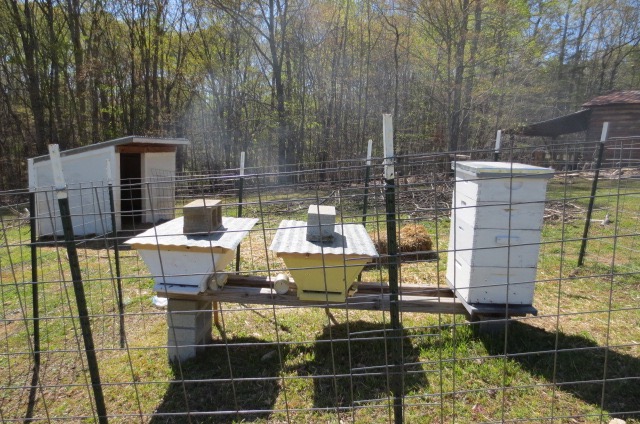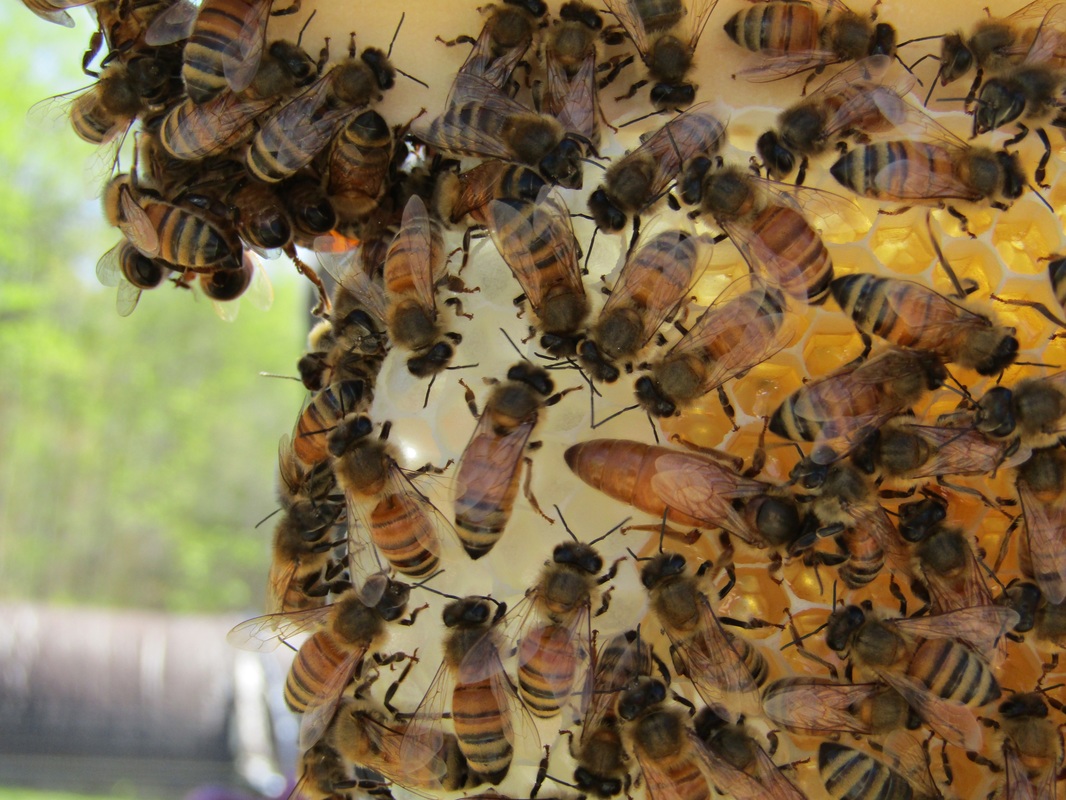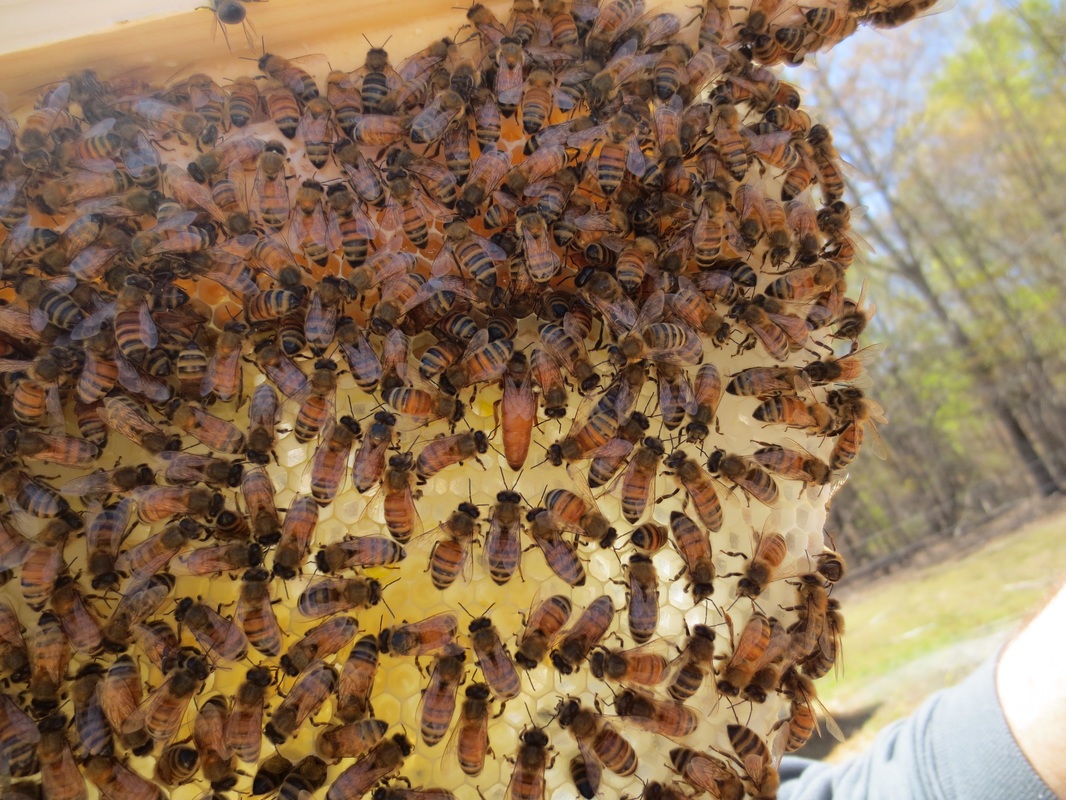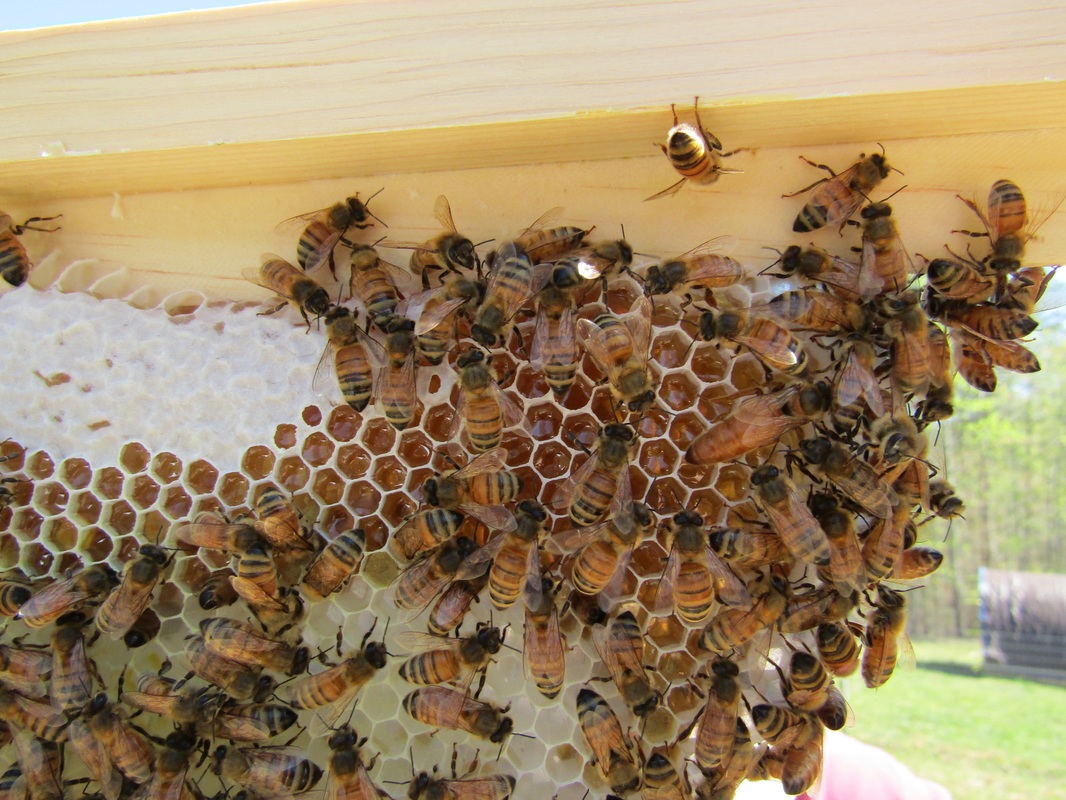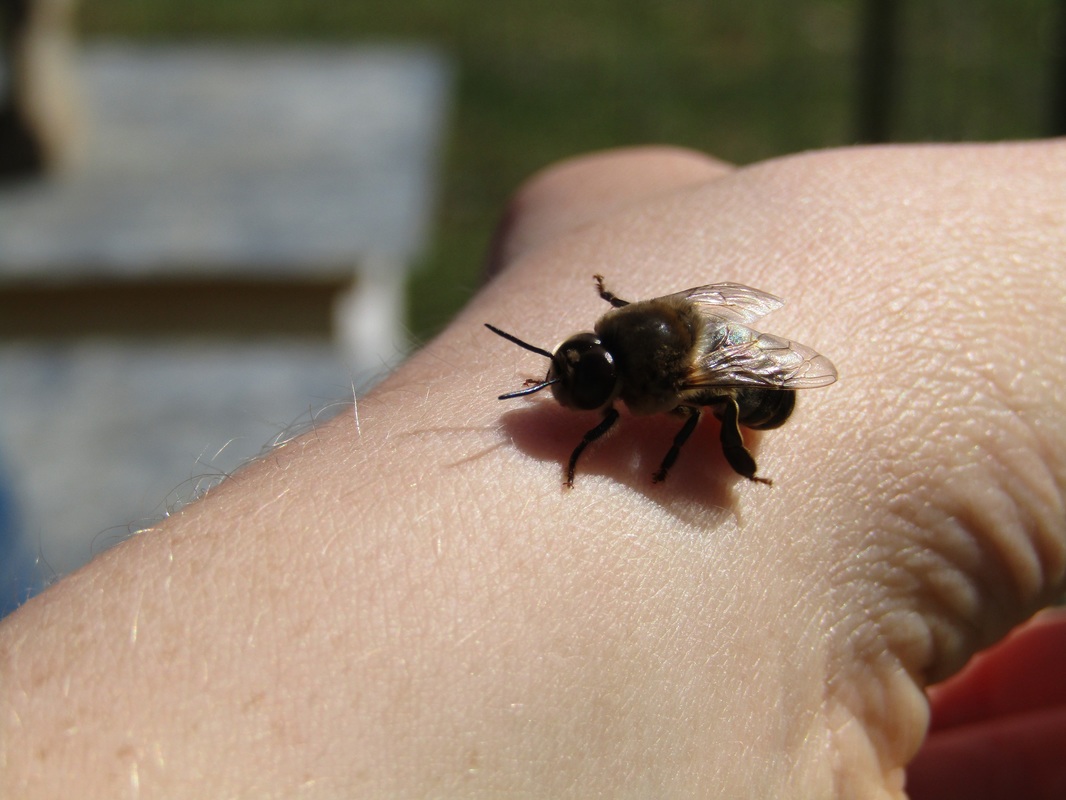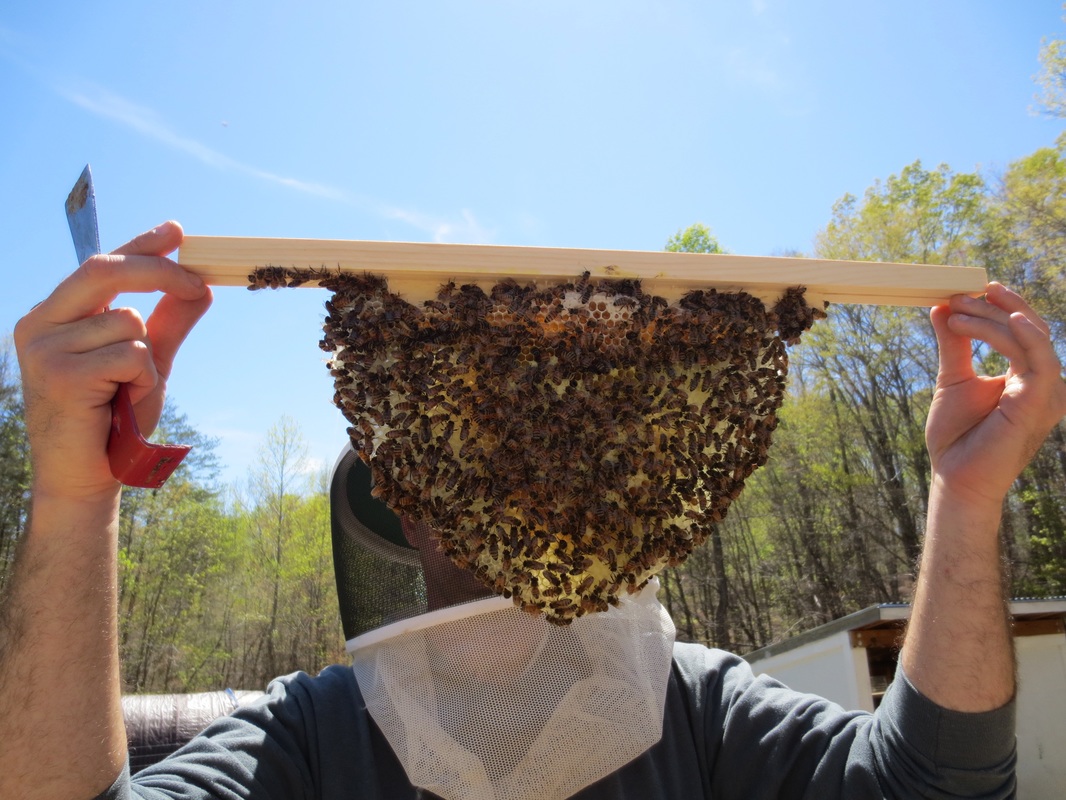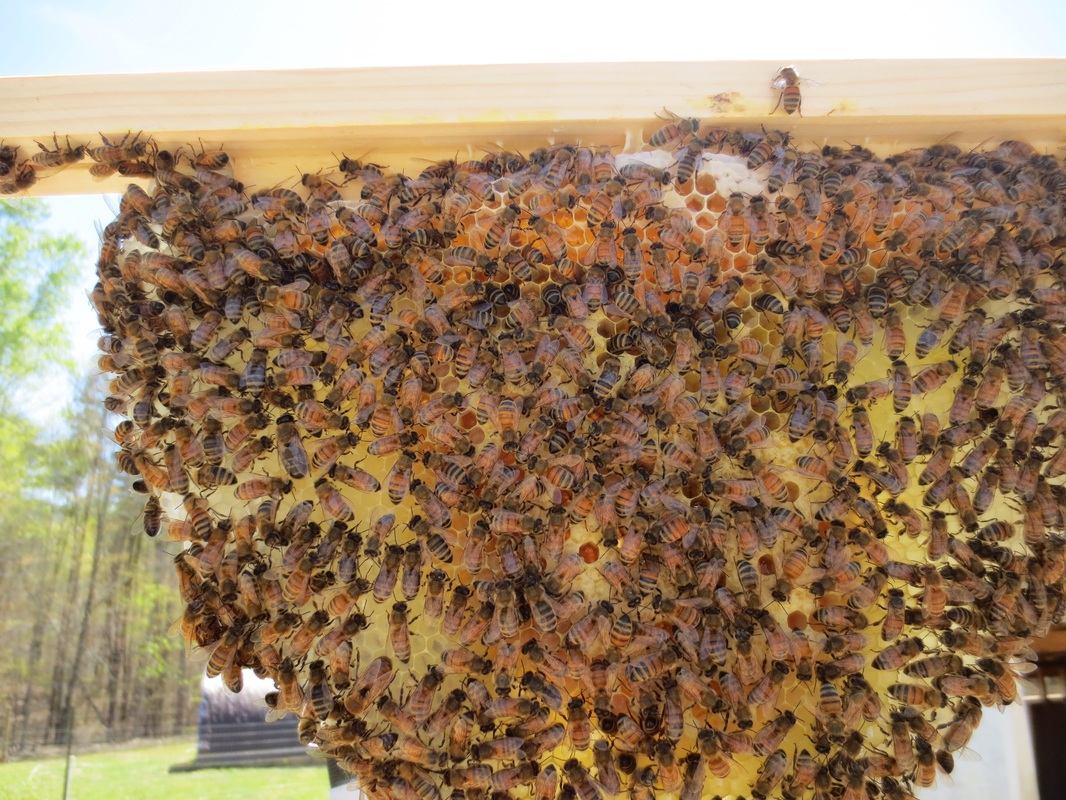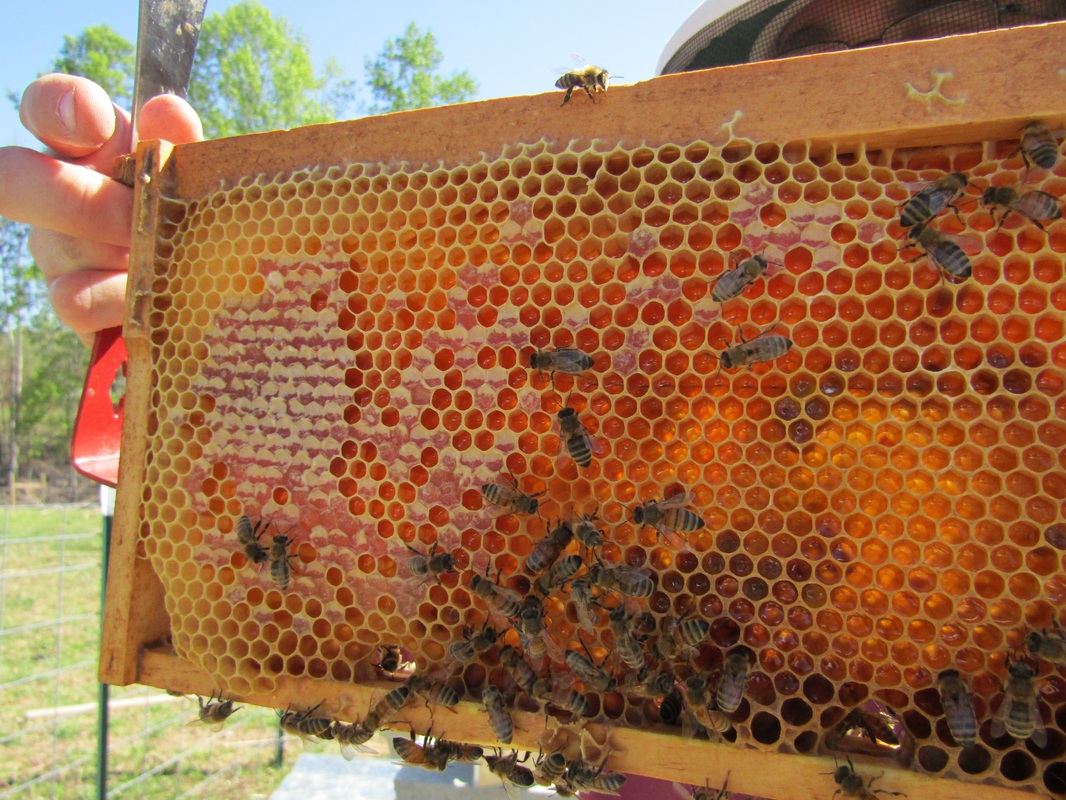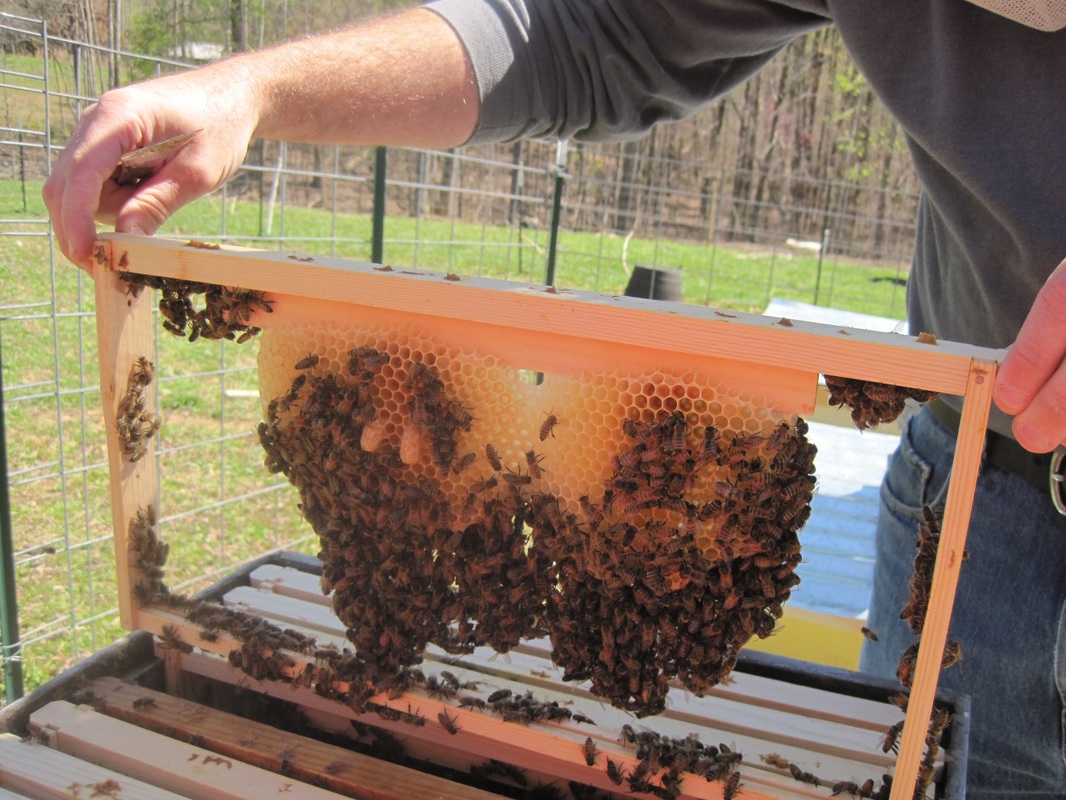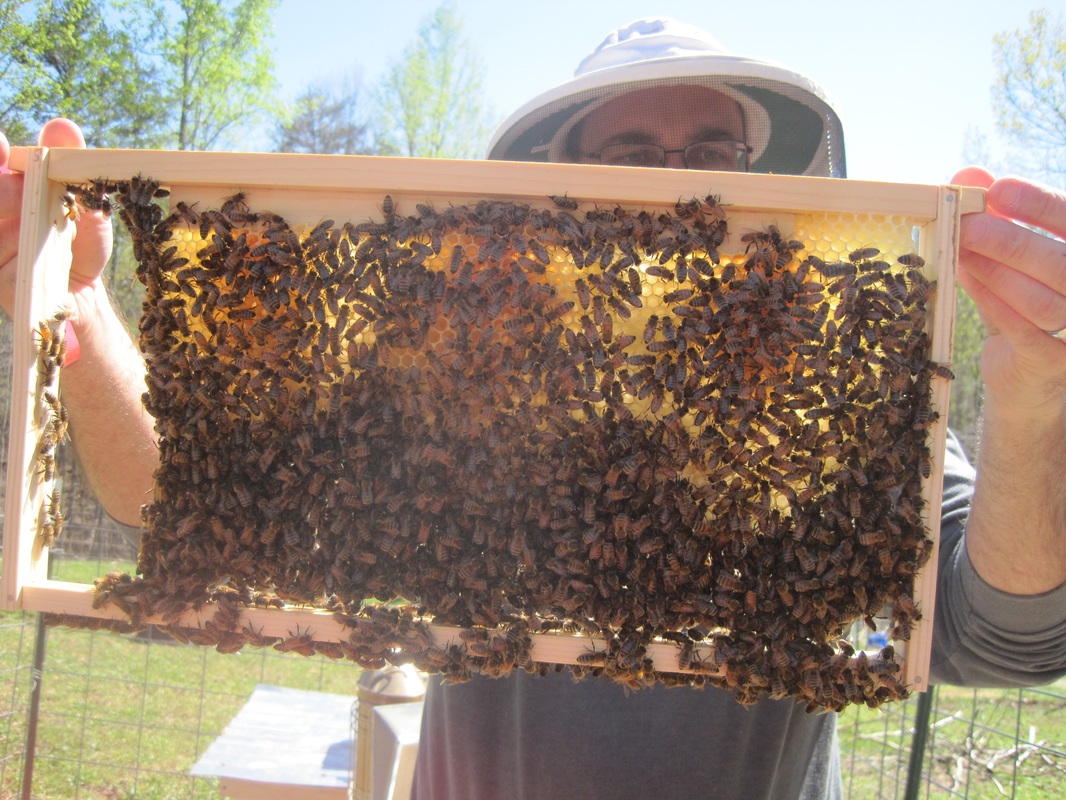We now have three bee hives: the yellow top bar hive, the white top bar hive, and Catywampus. We started the top bar hives this spring, and have had Catywampus for two and a half years.
Catywampus
Catywampus, formerly known as "the Langstroth," since that's the kind of hive it is, has turned into quite a fiasco. The workers running it decided to put brood in the honey supers and honey in the brood chamber. That means food where the babies go and babies where the food goes.
We replaced the comb in one of the empty brood chambers, with top bars, and the bees got busy, building comb and raising babies where babies are supposed to go. Everyone let out a sigh of relief. Problem solved.
We added another super because they were running out of room for honey. It had regular foundation, not top bars. To our great annoyance and unhappiness, the ladies decided they no longer liked the foundation and would only build comb on the top bars. Well, whatever, maybe they would get desperate enough to use it.
If you have bees, you probably know how fun it is to catch and hold drones. Drones are male bees. They do not have stingers. When you pick them up they get all mad and angry, but there is nothing they can do about it. It's hilarious. When we were checking the hives one day, Jane and I were each holding a drone. As we were looking at them we noticed that each had three or four little red things crawling on them. After a little research, we learned that these red things are varroa mites, an external parasite. We still have to figure out what to do about it.
Next we decided to buckle down and find the Langstroth queen. (We had not renamed the hive yet.) We combed through the hive. We found zero queens, zero eggs, zero larvae, and a good bit of capped brood. That means the hive had been without a queen for the last eight or more days. We did see some queen cups (brood cells for queens) so we were hoping they were raising up a new queen. A week or so later we checked again, and nothing, no queen and no eggs. After about a month without anything happening, we decided to get them a queen. We brought the queen home and put her in. She was in a queen cage to protect her from the workers until they accepted her. We checked them multiple times in the next two weeks. She got out and we couldn't find her. There was a possibility that those blockheaded workers had balled her. ("Balled" means they formed a ball around her and heated her until she died.) That's exactly what we needed. At that point all of us thought that Catywampus was a goner. Thankfully, a few days after the previous bee hive visit we found our queen. We all breathed a sigh of relief.
In the next few checks we saw that the queen had begun to lay. There were new eggs, larvae, and pupae. The bee population wasn't as low as it had been.
The next thing to go wrong was that the ladies just stopped making comb. Where are they going to put honey and baby bees if they don't make comb? Sadly, there is, as yet, no new comb.
There are those among us who still think ol' Catywampus is a goner. We'll update the blog with what happens.
The Top Bar Hives
The two top bar hives are doing great. The yellow one has more bees and comb than the white one, but both are very strong colonies. The two queens are busily laying eggs, and the workers are busy making comb, caring for baby bees, and collecting and storing nectar and pollen.
We have totally stopped feeding them sugar water as they have plentiful honey and pollen stores. They have made an extremely large amount of comb since we got them. They started out from nothing and we have already had to move the dividers over to give them more room.
In all, the top bar hives are doing impressively well.
Here are some pictures.
The bee yard:
Catywampus
Catywampus, formerly known as "the Langstroth," since that's the kind of hive it is, has turned into quite a fiasco. The workers running it decided to put brood in the honey supers and honey in the brood chamber. That means food where the babies go and babies where the food goes.
We replaced the comb in one of the empty brood chambers, with top bars, and the bees got busy, building comb and raising babies where babies are supposed to go. Everyone let out a sigh of relief. Problem solved.
We added another super because they were running out of room for honey. It had regular foundation, not top bars. To our great annoyance and unhappiness, the ladies decided they no longer liked the foundation and would only build comb on the top bars. Well, whatever, maybe they would get desperate enough to use it.
If you have bees, you probably know how fun it is to catch and hold drones. Drones are male bees. They do not have stingers. When you pick them up they get all mad and angry, but there is nothing they can do about it. It's hilarious. When we were checking the hives one day, Jane and I were each holding a drone. As we were looking at them we noticed that each had three or four little red things crawling on them. After a little research, we learned that these red things are varroa mites, an external parasite. We still have to figure out what to do about it.
Next we decided to buckle down and find the Langstroth queen. (We had not renamed the hive yet.) We combed through the hive. We found zero queens, zero eggs, zero larvae, and a good bit of capped brood. That means the hive had been without a queen for the last eight or more days. We did see some queen cups (brood cells for queens) so we were hoping they were raising up a new queen. A week or so later we checked again, and nothing, no queen and no eggs. After about a month without anything happening, we decided to get them a queen. We brought the queen home and put her in. She was in a queen cage to protect her from the workers until they accepted her. We checked them multiple times in the next two weeks. She got out and we couldn't find her. There was a possibility that those blockheaded workers had balled her. ("Balled" means they formed a ball around her and heated her until she died.) That's exactly what we needed. At that point all of us thought that Catywampus was a goner. Thankfully, a few days after the previous bee hive visit we found our queen. We all breathed a sigh of relief.
In the next few checks we saw that the queen had begun to lay. There were new eggs, larvae, and pupae. The bee population wasn't as low as it had been.
The next thing to go wrong was that the ladies just stopped making comb. Where are they going to put honey and baby bees if they don't make comb? Sadly, there is, as yet, no new comb.
There are those among us who still think ol' Catywampus is a goner. We'll update the blog with what happens.
The Top Bar Hives
The two top bar hives are doing great. The yellow one has more bees and comb than the white one, but both are very strong colonies. The two queens are busily laying eggs, and the workers are busy making comb, caring for baby bees, and collecting and storing nectar and pollen.
We have totally stopped feeding them sugar water as they have plentiful honey and pollen stores. They have made an extremely large amount of comb since we got them. They started out from nothing and we have already had to move the dividers over to give them more room.
In all, the top bar hives are doing impressively well.
Here are some pictures.
The bee yard:
Queens in the top bar hives:
A drone on Jane's arm:
Dad holding a top bar:
A closer shot of a top bar with comb. The white in the center at the top is capped honey and the golden around it is uncapped nectar. In the middle there is capped worker brood and some larvae scattered around that. The comb on the edges are not yet built out completely.
Capped honey and uncapped nectar in the Langstroth:
Top bars in regular frames:
By Suzanne Tyler
The Green T Goatherd
The Green T Goatherd
